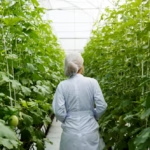Sustainable packaging in agroprocessing is an important area to explore as it offers opportunities to reduce the environmental impact of the agriculture and food processing industry. Agroprocessing involves the transformation of raw agricultural products into value-added food products, such as processing fruits into juices or vegetables into canned goods. Packaging plays a crucial role in preserving the quality and safety of these processed foods, but it can also contribute to environmental issues, such as waste generation and greenhouse gas emissions.
Here are some potential avenues to explore when considering sustainable packaging in agroprocessing:
- Biodegradable and compostable materials: Traditional packaging materials like plastics can take hundreds of years to decompose. By using biodegradable or compostable materials, such as bio-based plastics or plant-based materials like cornstarch, the environmental impact of packaging waste can be significantly reduced. These materials break down more quickly and can be composted, reducing the amount of waste sent to landfills.
- Recyclable packaging: Designing packaging that is easily recyclable helps promote a circular economy. Using materials like glass, aluminum, or certain types of plastics that are widely accepted by recycling facilities can enable the packaging to be reused or repurposed. It’s important to consider both the packaging material itself and its compatibility with existing recycling infrastructure.
- Minimalistic packaging design: Excessive packaging contributes to unnecessary waste generation. Implementing minimalistic packaging design principles, such as using the right-sized packaging for the product, eliminating unnecessary layers, and avoiding excessive use of materials, can help reduce the environmental footprint. Additionally, lightweight packaging materials can lower transportation costs and energy consumption during distribution.
- Innovative packaging solutions: Exploring innovative packaging technologies can provide new opportunities for sustainability. For example, active packaging technologies can extend the shelf life of products, reducing food waste. Smart packaging incorporating sensors or indicators can provide real-time information on the product’s freshness and quality, helping consumers make informed decisions and reducing food waste.
- Reusable packaging systems: Implementing reusable packaging systems, such as returnable crates or containers, can significantly reduce packaging waste. These systems involve the collection, cleaning, and reuse of packaging materials, reducing the need for single-use packaging. This approach requires collaboration among various stakeholders in the supply chain to establish efficient collection and return mechanisms.
- Life cycle assessment: Conducting life cycle assessments (LCAs) can help evaluate the environmental impact of different packaging options. LCAs consider the entire life cycle of packaging, from raw material extraction to disposal, and provide insights into the environmental hotspots and potential areas for improvement. By understanding the environmental implications, informed decisions can be made to select the most sustainable packaging options.
- Consumer education and awareness: Educating consumers about the importance of sustainable packaging and providing information on how to properly dispose of or recycle packaging materials can significantly enhance sustainability efforts. Clear labeling and communication on packaging can help consumers understand the environmental attributes of the packaging and encourage them to make eco-friendly choices.
Exploring the potential of sustainable packaging in agroprocessing requires collaboration among agroprocessors, packaging manufacturers, researchers, policymakers, and consumers. By implementing these strategies and fostering innovation, the industry can reduce its environmental impact and move towards a more sustainable future.









